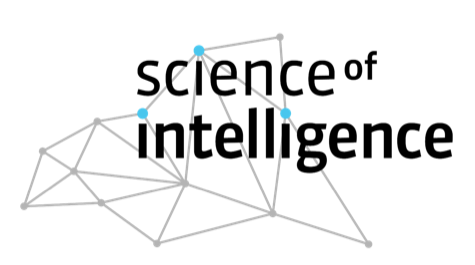Exploring visual scene analysis in humans and assessing its potential for use in computer vision systems

Photo: Unsplash.com/Freddy-Marschall
This project focuses on the potential of object-level search processes for understanding visual scene analysis in humans and assesses their potential for real-world scene interpretation and search tasks by computer vision systems. In order to perform this research, we will study an ecologically valid setting where free-viewing mode, real-world dynamic scenes, and visual exploration tasks that have to be performed simultaneously. This will provide novel insights into the question of how human subjects balance attentional processing under – potentially conflicting – task demands. To this end, we will combine eye-tracking experiments in humans with the computational modelling of fixation sequences, with algorithm development, and with the design of computer vision systems using foveated attention and camera movements akin to eye movements.
Related Publications +
2756394
proj001
1
apa
50
creator
desc
year
20155
https://www.scienceofintelligence.de/wp-content/plugins/zotpress/
%7B%22status%22%3A%22success%22%2C%22updateneeded%22%3Afalse%2C%22instance%22%3Afalse%2C%22meta%22%3A%7B%22request_last%22%3A0%2C%22request_next%22%3A0%2C%22used_cache%22%3Atrue%7D%2C%22data%22%3A%5B%7B%22key%22%3A%22Y8WAXKK8%22%2C%22library%22%3A%7B%22id%22%3A2756394%7D%2C%22meta%22%3A%7B%22creatorSummary%22%3A%22Wirth%20et%20al.%22%2C%22parsedDate%22%3A%222022%22%2C%22numChildren%22%3A0%7D%2C%22bib%22%3A%22%3Cdiv%20class%3D%5C%22csl-bib-body%5C%22%20style%3D%5C%22line-height%3A%202%3B%20padding-left%3A%201em%3B%20text-indent%3A-1em%3B%5C%22%3E%5Cn%20%20%3Cdiv%20class%3D%5C%22csl-entry%5C%22%3EWirth%2C%20L.%2C%20Shurygina%2C%20O.%2C%20Rolfs%2C%20M.%2C%20%26amp%3B%20Ohl%2C%20S.%20%282022%29.%20Target-location%20rather%20than%20target-object%20specific%20saccadic%20selection%20in%20visual%20working%20memory.%20%3Ci%3EPERCEPTION%20%5C%2F%2044th%20European%20Conference%20on%20Visual%20Perception%20%28ECVP%29%202022%3C%5C%2Fi%3E.%20%3Ca%20class%3D%27zp-ItemURL%27%20href%3D%27https%3A%5C%2F%5C%2Fjournals.sagepub.com%5C%2Fdoi%5C%2F10.1177%5C%2F03010066221141167%27%3Ehttps%3A%5C%2F%5C%2Fjournals.sagepub.com%5C%2Fdoi%5C%2F10.1177%5C%2F03010066221141167%3C%5C%2Fa%3E%3C%5C%2Fdiv%3E%5Cn%3C%5C%2Fdiv%3E%22%2C%22data%22%3A%7B%22itemType%22%3A%22conferencePaper%22%2C%22title%22%3A%22Target-location%20rather%20than%20target-object%20specific%20saccadic%20selection%20in%20visual%20working%20memory%22%2C%22creators%22%3A%5B%7B%22creatorType%22%3A%22author%22%2C%22firstName%22%3A%22Laura%22%2C%22lastName%22%3A%22Wirth%22%7D%2C%7B%22creatorType%22%3A%22author%22%2C%22firstName%22%3A%22Olga%22%2C%22lastName%22%3A%22Shurygina%22%7D%2C%7B%22creatorType%22%3A%22author%22%2C%22firstName%22%3A%22Martin%22%2C%22lastName%22%3A%22Rolfs%22%7D%2C%7B%22creatorType%22%3A%22author%22%2C%22firstName%22%3A%22Sven%22%2C%22lastName%22%3A%22Ohl%22%7D%5D%2C%22abstractNote%22%3A%22%22%2C%22date%22%3A%222022%22%2C%22proceedingsTitle%22%3A%22PERCEPTION%20%5C%2F%2044th%20European%20Conference%20on%20Visual%20Perception%20%28ECVP%29%202022%22%2C%22conferenceName%22%3A%22%22%2C%22language%22%3A%22%22%2C%22DOI%22%3A%22%22%2C%22ISBN%22%3A%22%22%2C%22url%22%3A%22https%3A%5C%2F%5C%2Fjournals.sagepub.com%5C%2Fdoi%5C%2F10.1177%5C%2F03010066221141167%22%2C%22collections%22%3A%5B%5D%2C%22dateModified%22%3A%222025-05-30T15%3A00%3A34Z%22%7D%7D%2C%7B%22key%22%3A%22LRMZJ4BA%22%2C%22library%22%3A%7B%22id%22%3A2756394%7D%2C%22meta%22%3A%7B%22creatorSummary%22%3A%22Shurygina%20et%20al.%22%2C%22parsedDate%22%3A%222021%22%2C%22numChildren%22%3A1%7D%2C%22bib%22%3A%22%3Cdiv%20class%3D%5C%22csl-bib-body%5C%22%20style%3D%5C%22line-height%3A%202%3B%20padding-left%3A%201em%3B%20text-indent%3A-1em%3B%5C%22%3E%5Cn%20%20%3Cdiv%20class%3D%5C%22csl-entry%5C%22%3EShurygina%2C%20O.%2C%20Pooresmaeili%2C%20A.%2C%20%26amp%3B%20Rolfs%2C%20M.%20%282021%29.%20Pre-saccadic%20attention%20spreads%20to%20stimuli%20forming%20a%20perceptual%20group%20with%20the%20saccade%20target.%20%3Ci%3ECortex%3C%5C%2Fi%3E%2C%20%3Ci%3E140%3C%5C%2Fi%3E%2C%20179%26%23x2013%3B198.%20%3Ca%20class%3D%27zp-DOIURL%27%20href%3D%27https%3A%5C%2F%5C%2Fdoi.org%5C%2F10.1016%5C%2Fj.cortex.2021.03.020%27%3Ehttps%3A%5C%2F%5C%2Fdoi.org%5C%2F10.1016%5C%2Fj.cortex.2021.03.020%3C%5C%2Fa%3E%3C%5C%2Fdiv%3E%5Cn%3C%5C%2Fdiv%3E%22%2C%22data%22%3A%7B%22itemType%22%3A%22journalArticle%22%2C%22title%22%3A%22Pre-saccadic%20attention%20spreads%20to%20stimuli%20forming%20a%20perceptual%20group%20with%20the%20saccade%20target%22%2C%22creators%22%3A%5B%7B%22creatorType%22%3A%22author%22%2C%22firstName%22%3A%22Olga%22%2C%22lastName%22%3A%22Shurygina%22%7D%2C%7B%22creatorType%22%3A%22author%22%2C%22firstName%22%3A%22Arezoo%22%2C%22lastName%22%3A%22Pooresmaeili%22%7D%2C%7B%22creatorType%22%3A%22author%22%2C%22firstName%22%3A%22Martin%22%2C%22lastName%22%3A%22Rolfs%22%7D%5D%2C%22abstractNote%22%3A%22%22%2C%22date%22%3A%222021%22%2C%22language%22%3A%22%22%2C%22DOI%22%3A%2210.1016%5C%2Fj.cortex.2021.03.020%22%2C%22ISSN%22%3A%22%22%2C%22url%22%3A%22%22%2C%22collections%22%3A%5B%5D%2C%22dateModified%22%3A%222025-05-30T15%3A00%3A34Z%22%7D%7D%2C%7B%22key%22%3A%22JMAI6B5G%22%2C%22library%22%3A%7B%22id%22%3A2756394%7D%2C%22meta%22%3A%7B%22creatorSummary%22%3A%22Shurygina%20and%20Rolfs%22%2C%22parsedDate%22%3A%222021%22%2C%22numChildren%22%3A0%7D%2C%22bib%22%3A%22%3Cdiv%20class%3D%5C%22csl-bib-body%5C%22%20style%3D%5C%22line-height%3A%202%3B%20padding-left%3A%201em%3B%20text-indent%3A-1em%3B%5C%22%3E%5Cn%20%20%3Cdiv%20class%3D%5C%22csl-entry%5C%22%3EShurygina%2C%20O.%2C%20%26amp%3B%20Rolfs%2C%20M.%20%282021%29.%20Visual%20sensitivity%20and%20reaction%20time%20measures%20show%20no%20evidence%20for%20purely%20exogenous%20object-based%20attention.%20%3Ci%3EJournal%20of%20Vision%20%5C%2F%20VSS%202021%3C%5C%2Fi%3E%2C%202571%26%23x2013%3B2571.%20%3Ca%20class%3D%27zp-DOIURL%27%20href%3D%27https%3A%5C%2F%5C%2Fdoi.org%5C%2F10.1167%5C%2Fjov.21.9.2571%27%3Ehttps%3A%5C%2F%5C%2Fdoi.org%5C%2F10.1167%5C%2Fjov.21.9.2571%3C%5C%2Fa%3E%3C%5C%2Fdiv%3E%5Cn%3C%5C%2Fdiv%3E%22%2C%22data%22%3A%7B%22itemType%22%3A%22conferencePaper%22%2C%22title%22%3A%22Visual%20sensitivity%20and%20reaction%20time%20measures%20show%20no%20evidence%20for%20purely%20exogenous%20object-based%20attention.%22%2C%22creators%22%3A%5B%7B%22creatorType%22%3A%22author%22%2C%22firstName%22%3A%22Olga%22%2C%22lastName%22%3A%22Shurygina%22%7D%2C%7B%22creatorType%22%3A%22author%22%2C%22firstName%22%3A%22Martin%22%2C%22lastName%22%3A%22Rolfs%22%7D%5D%2C%22abstractNote%22%3A%22%22%2C%22date%22%3A%222021%22%2C%22proceedingsTitle%22%3A%22Journal%20of%20Vision%20%5C%2F%20VSS%202021%22%2C%22conferenceName%22%3A%22%22%2C%22language%22%3A%22%22%2C%22DOI%22%3A%2210.1167%5C%2Fjov.21.9.2571%22%2C%22ISBN%22%3A%22%22%2C%22url%22%3A%22%22%2C%22collections%22%3A%5B%5D%2C%22dateModified%22%3A%222025-05-30T15%3A00%3A34Z%22%7D%7D%2C%7B%22key%22%3A%22WZ4Q6BRX%22%2C%22library%22%3A%7B%22id%22%3A2756394%7D%2C%22meta%22%3A%7B%22creatorSummary%22%3A%22Shurygina%20and%20Rolfs%22%2C%22parsedDate%22%3A%222022%22%2C%22numChildren%22%3A0%7D%2C%22bib%22%3A%22%3Cdiv%20class%3D%5C%22csl-bib-body%5C%22%20style%3D%5C%22line-height%3A%202%3B%20padding-left%3A%201em%3B%20text-indent%3A-1em%3B%5C%22%3E%5Cn%20%20%3Cdiv%20class%3D%5C%22csl-entry%5C%22%3EShurygina%2C%20O.%2C%20%26amp%3B%20Rolfs%2C%20M.%20%282022%29.%20Eye%20movement%20characteristics%20reflect%20object-based%20attention.%20%3Ci%3EJournal%20of%20Vision%20%5C%2F%20VSS%202022%3C%5C%2Fi%3E%2C%203481%26%23x2013%3B3481.%20%3Ca%20class%3D%27zp-DOIURL%27%20href%3D%27https%3A%5C%2F%5C%2Fdoi.org%5C%2F10.1167%5C%2Fjov.22.14.3481%27%3Ehttps%3A%5C%2F%5C%2Fdoi.org%5C%2F10.1167%5C%2Fjov.22.14.3481%3C%5C%2Fa%3E%3C%5C%2Fdiv%3E%5Cn%3C%5C%2Fdiv%3E%22%2C%22data%22%3A%7B%22itemType%22%3A%22conferencePaper%22%2C%22title%22%3A%22Eye%20movement%20characteristics%20reflect%20object-based%20attention%22%2C%22creators%22%3A%5B%7B%22creatorType%22%3A%22author%22%2C%22firstName%22%3A%22Olga%22%2C%22lastName%22%3A%22Shurygina%22%7D%2C%7B%22creatorType%22%3A%22author%22%2C%22firstName%22%3A%22Martin%22%2C%22lastName%22%3A%22Rolfs%22%7D%5D%2C%22abstractNote%22%3A%22%22%2C%22date%22%3A%222022%22%2C%22proceedingsTitle%22%3A%22Journal%20of%20Vision%20%5C%2F%20VSS%202022%22%2C%22conferenceName%22%3A%22%22%2C%22language%22%3A%22%22%2C%22DOI%22%3A%2210.1167%5C%2Fjov.22.14.3481%22%2C%22ISBN%22%3A%22%22%2C%22url%22%3A%22%22%2C%22collections%22%3A%5B%5D%2C%22dateModified%22%3A%222025-05-30T15%3A00%3A34Z%22%7D%7D%2C%7B%22key%22%3A%22Z5ZCXRTB%22%2C%22library%22%3A%7B%22id%22%3A2756394%7D%2C%22meta%22%3A%7B%22creatorSummary%22%3A%22Shurygina%20and%20Rolfs%22%2C%22parsedDate%22%3A%222022%22%2C%22numChildren%22%3A0%7D%2C%22bib%22%3A%22%3Cdiv%20class%3D%5C%22csl-bib-body%5C%22%20style%3D%5C%22line-height%3A%202%3B%20padding-left%3A%201em%3B%20text-indent%3A-1em%3B%5C%22%3E%5Cn%20%20%3Cdiv%20class%3D%5C%22csl-entry%5C%22%3EShurygina%2C%20O.%2C%20%26amp%3B%20Rolfs%2C%20M.%20%282022%29.%20Saccade%20kinematics%20reflect%20object-based%20attention%20in%20realistic%20but%20not%20in%20simplified%20stimuli.%20%3Ci%3EPERCEPTION%20%5C%2F%2044th%20European%20Conference%20on%20Visual%20Perception%20%28ECVP%29%202022%3C%5C%2Fi%3E.%3C%5C%2Fdiv%3E%5Cn%3C%5C%2Fdiv%3E%22%2C%22data%22%3A%7B%22itemType%22%3A%22conferencePaper%22%2C%22title%22%3A%22Saccade%20kinematics%20reflect%20object-based%20attention%20in%20realistic%20but%20not%20in%20simplified%20stimuli.%22%2C%22creators%22%3A%5B%7B%22creatorType%22%3A%22author%22%2C%22firstName%22%3A%22Olga%22%2C%22lastName%22%3A%22Shurygina%22%7D%2C%7B%22creatorType%22%3A%22author%22%2C%22firstName%22%3A%22Martin%22%2C%22lastName%22%3A%22Rolfs%22%7D%5D%2C%22abstractNote%22%3A%22%22%2C%22date%22%3A%222022%22%2C%22proceedingsTitle%22%3A%22PERCEPTION%20%5C%2F%2044th%20European%20Conference%20on%20Visual%20Perception%20%28ECVP%29%202022%22%2C%22conferenceName%22%3A%22%22%2C%22language%22%3A%22%22%2C%22DOI%22%3A%22%22%2C%22ISBN%22%3A%22%22%2C%22url%22%3A%22%22%2C%22collections%22%3A%5B%5D%2C%22dateModified%22%3A%222025-05-30T15%3A00%3A34Z%22%7D%7D%2C%7B%22key%22%3A%2266B4PMRI%22%2C%22library%22%3A%7B%22id%22%3A2756394%7D%2C%22meta%22%3A%7B%22creatorSummary%22%3A%22Schmittwilken%20et%20al.%22%2C%22parsedDate%22%3A%222021%22%2C%22numChildren%22%3A0%7D%2C%22bib%22%3A%22%3Cdiv%20class%3D%5C%22csl-bib-body%5C%22%20style%3D%5C%22line-height%3A%202%3B%20padding-left%3A%201em%3B%20text-indent%3A-1em%3B%5C%22%3E%5Cn%20%20%3Cdiv%20class%3D%5C%22csl-entry%5C%22%3ESchmittwilken%2C%20L.%2C%20Matic%2C%20M.%2C%20Maertens%2C%20M.%2C%20%26amp%3B%20Vincent%2C%20J.%20%282021%29.%20BRENCH%3A%20An%20open-source%20framework%20for%20b%28r%29enchmarking%20brightness%20models.%20%3Ci%3EJournal%20of%20Vision%3C%5C%2Fi%3E.%20%3Ca%20class%3D%27zp-DOIURL%27%20href%3D%27https%3A%5C%2F%5C%2Fdoi.org%5C%2F10.1167%5C%2Fjov.22.3.36%27%3Ehttps%3A%5C%2F%5C%2Fdoi.org%5C%2F10.1167%5C%2Fjov.22.3.36%3C%5C%2Fa%3E%3C%5C%2Fdiv%3E%5Cn%3C%5C%2Fdiv%3E%22%2C%22data%22%3A%7B%22itemType%22%3A%22conferencePaper%22%2C%22title%22%3A%22BRENCH%3A%20An%20open-source%20framework%20for%20b%28r%29enchmarking%20brightness%20models%22%2C%22creators%22%3A%5B%7B%22creatorType%22%3A%22author%22%2C%22firstName%22%3A%22Lynn%22%2C%22lastName%22%3A%22Schmittwilken%22%7D%2C%7B%22creatorType%22%3A%22author%22%2C%22firstName%22%3A%22Matko%22%2C%22lastName%22%3A%22Matic%22%7D%2C%7B%22creatorType%22%3A%22author%22%2C%22firstName%22%3A%22Marianne%22%2C%22lastName%22%3A%22Maertens%22%7D%2C%7B%22creatorType%22%3A%22author%22%2C%22firstName%22%3A%22Joris%22%2C%22lastName%22%3A%22Vincent%22%7D%5D%2C%22abstractNote%22%3A%22%22%2C%22date%22%3A%222021%22%2C%22proceedingsTitle%22%3A%22Journal%20of%20Vision%22%2C%22conferenceName%22%3A%22%22%2C%22language%22%3A%22%22%2C%22DOI%22%3A%2210.1167%5C%2Fjov.22.3.36%22%2C%22ISBN%22%3A%22%22%2C%22url%22%3A%22%22%2C%22collections%22%3A%5B%5D%2C%22dateModified%22%3A%222025-05-30T15%3A00%3A34Z%22%7D%7D%2C%7B%22key%22%3A%229KEIS9H6%22%2C%22library%22%3A%7B%22id%22%3A2756394%7D%2C%22meta%22%3A%7B%22creatorSummary%22%3A%22Schmittwilken%20et%20al.%22%2C%22parsedDate%22%3A%222024%22%2C%22numChildren%22%3A1%7D%2C%22bib%22%3A%22%3Cdiv%20class%3D%5C%22csl-bib-body%5C%22%20style%3D%5C%22line-height%3A%202%3B%20padding-left%3A%201em%3B%20text-indent%3A-1em%3B%5C%22%3E%5Cn%20%20%3Cdiv%20class%3D%5C%22csl-entry%5C%22%3ESchmittwilken%2C%20L.%2C%20Wichmann%2C%20Felix.%20A.%2C%20%26amp%3B%20Maertens%2C%20M.%20%282024%29.%20Fixational%20eye%20movements%20enable%20robust%20edge%20detection.%20%3Ci%3EJournal%20of%20Vision%3C%5C%2Fi%3E%2C%20%3Ci%3E222%3C%5C%2Fi%3E%2C%20108450.%20%3Ca%20class%3D%27zp-DOIURL%27%20href%3D%27https%3A%5C%2F%5C%2Fdoi.org%5C%2F10.1016%5C%2Fj.visres.2024.108450%27%3Ehttps%3A%5C%2F%5C%2Fdoi.org%5C%2F10.1016%5C%2Fj.visres.2024.108450%3C%5C%2Fa%3E%3C%5C%2Fdiv%3E%5Cn%3C%5C%2Fdiv%3E%22%2C%22data%22%3A%7B%22itemType%22%3A%22journalArticle%22%2C%22title%22%3A%22Fixational%20eye%20movements%20enable%20robust%20edge%20detection%22%2C%22creators%22%3A%5B%7B%22creatorType%22%3A%22author%22%2C%22firstName%22%3A%22Lynn%22%2C%22lastName%22%3A%22Schmittwilken%22%7D%2C%7B%22creatorType%22%3A%22author%22%2C%22firstName%22%3A%22Felix.%20A.%22%2C%22lastName%22%3A%22Wichmann%22%7D%2C%7B%22creatorType%22%3A%22author%22%2C%22firstName%22%3A%22Marianne%22%2C%22lastName%22%3A%22Maertens%22%7D%5D%2C%22abstractNote%22%3A%22%22%2C%22date%22%3A%222024%22%2C%22language%22%3A%22%22%2C%22DOI%22%3A%2210.1016%5C%2Fj.visres.2024.108450%22%2C%22ISSN%22%3A%22%22%2C%22url%22%3A%22%22%2C%22collections%22%3A%5B%5D%2C%22dateModified%22%3A%222025-05-30T15%3A00%3A27Z%22%7D%7D%2C%7B%22key%22%3A%2233BLTZPD%22%2C%22library%22%3A%7B%22id%22%3A2756394%7D%2C%22meta%22%3A%7B%22creatorSummary%22%3A%22Schmittwilken%20and%20Maertens%22%2C%22parsedDate%22%3A%222022%22%2C%22numChildren%22%3A1%7D%2C%22bib%22%3A%22%3Cdiv%20class%3D%5C%22csl-bib-body%5C%22%20style%3D%5C%22line-height%3A%202%3B%20padding-left%3A%201em%3B%20text-indent%3A-1em%3B%5C%22%3E%5Cn%20%20%3Cdiv%20class%3D%5C%22csl-entry%5C%22%3ESchmittwilken%2C%20L.%2C%20%26amp%3B%20Maertens%2C%20M.%20%282022%29.%20Fixational%20eye%20movements%20enable%20robust%20edge%20detection.%20%3Ci%3EJournal%20of%20Vision%3C%5C%2Fi%3E.%20%3Ca%20class%3D%27zp-DOIURL%27%20href%3D%27https%3A%5C%2F%5C%2Fdoi.org%5C%2F10.1167%5C%2Fjov.22.8.5%27%3Ehttps%3A%5C%2F%5C%2Fdoi.org%5C%2F10.1167%5C%2Fjov.22.8.5%3C%5C%2Fa%3E%3C%5C%2Fdiv%3E%5Cn%3C%5C%2Fdiv%3E%22%2C%22data%22%3A%7B%22itemType%22%3A%22journalArticle%22%2C%22title%22%3A%22Fixational%20eye%20movements%20enable%20robust%20edge%20detection%22%2C%22creators%22%3A%5B%7B%22creatorType%22%3A%22author%22%2C%22firstName%22%3A%22Lynn%22%2C%22lastName%22%3A%22Schmittwilken%22%7D%2C%7B%22creatorType%22%3A%22author%22%2C%22firstName%22%3A%22Marianne%22%2C%22lastName%22%3A%22Maertens%22%7D%5D%2C%22abstractNote%22%3A%22%22%2C%22date%22%3A%222022%22%2C%22language%22%3A%22%22%2C%22DOI%22%3A%2210.1167%5C%2Fjov.22.8.5%22%2C%22ISSN%22%3A%22%22%2C%22url%22%3A%22%22%2C%22collections%22%3A%5B%5D%2C%22dateModified%22%3A%222025-05-30T15%3A00%3A34Z%22%7D%7D%2C%7B%22key%22%3A%22MDPA3BDK%22%2C%22library%22%3A%7B%22id%22%3A2756394%7D%2C%22meta%22%3A%7B%22creatorSummary%22%3A%22Schmittwilken%20and%20Maertens%22%2C%22parsedDate%22%3A%222022%22%2C%22numChildren%22%3A0%7D%2C%22bib%22%3A%22%3Cdiv%20class%3D%5C%22csl-bib-body%5C%22%20style%3D%5C%22line-height%3A%202%3B%20padding-left%3A%201em%3B%20text-indent%3A-1em%3B%5C%22%3E%5Cn%20%20%3Cdiv%20class%3D%5C%22csl-entry%5C%22%3ESchmittwilken%2C%20L.%2C%20%26amp%3B%20Maertens%2C%20M.%20%282022%29.%20Medium%20spatial%20frequencies%20mask%20edges%20most%20effectively.%20%3Ci%3EJournal%20of%20Vision%3C%5C%2Fi%3E.%20%3Ca%20class%3D%27zp-DOIURL%27%20href%3D%27https%3A%5C%2F%5C%2Fdoi.org%5C%2F10.1167%5C%2Fjov.22.14.4041%27%3Ehttps%3A%5C%2F%5C%2Fdoi.org%5C%2F10.1167%5C%2Fjov.22.14.4041%3C%5C%2Fa%3E%3C%5C%2Fdiv%3E%5Cn%3C%5C%2Fdiv%3E%22%2C%22data%22%3A%7B%22itemType%22%3A%22conferencePaper%22%2C%22title%22%3A%22Medium%20spatial%20frequencies%20mask%20edges%20most%20effectively%22%2C%22creators%22%3A%5B%7B%22creatorType%22%3A%22author%22%2C%22firstName%22%3A%22Lynn%22%2C%22lastName%22%3A%22Schmittwilken%22%7D%2C%7B%22creatorType%22%3A%22author%22%2C%22firstName%22%3A%22Marianne%22%2C%22lastName%22%3A%22Maertens%22%7D%5D%2C%22abstractNote%22%3A%22%22%2C%22date%22%3A%222022%22%2C%22proceedingsTitle%22%3A%22Journal%20of%20Vision%22%2C%22conferenceName%22%3A%22%22%2C%22language%22%3A%22%22%2C%22DOI%22%3A%2210.1167%5C%2Fjov.22.14.4041%22%2C%22ISBN%22%3A%22%22%2C%22url%22%3A%22%22%2C%22collections%22%3A%5B%5D%2C%22dateModified%22%3A%222025-05-30T15%3A00%3A34Z%22%7D%7D%2C%7B%22key%22%3A%22SQINMGLB%22%2C%22library%22%3A%7B%22id%22%3A2756394%7D%2C%22meta%22%3A%7B%22creatorSummary%22%3A%22Roth%20et%20al.%22%2C%22parsedDate%22%3A%222021%22%2C%22numChildren%22%3A1%7D%2C%22bib%22%3A%22%3Cdiv%20class%3D%5C%22csl-bib-body%5C%22%20style%3D%5C%22line-height%3A%202%3B%20padding-left%3A%201em%3B%20text-indent%3A-1em%3B%5C%22%3E%5Cn%20%20%3Cdiv%20class%3D%5C%22csl-entry%5C%22%3ERoth%2C%20N.%2C%20Bideau%2C%20P.%2C%20Hellwich%2C%20O.%2C%20Rolfs%2C%20M.%2C%20%26amp%3B%20Obermayer%2C%20K.%20%282021%29.%20%3Ci%3EModeling%20the%20influence%20of%20objects%20on%20saccadic%20decisions%20in%20dynamic%20real-world%20scenes%3C%5C%2Fi%3E.%20PERCEPTION%20%5C%2F%2043rd%20European%20Conference%20on%20Visual%20Perception%20%28ECVP%29%202021.%20%3Ca%20class%3D%27zp-ItemURL%27%20href%3D%27https%3A%5C%2F%5C%2Fjournals.sagepub.com%5C%2Fdoi%5C%2Ffull%5C%2F10.1177%5C%2F03010066211059887%27%3Ehttps%3A%5C%2F%5C%2Fjournals.sagepub.com%5C%2Fdoi%5C%2Ffull%5C%2F10.1177%5C%2F03010066211059887%3C%5C%2Fa%3E%3C%5C%2Fdiv%3E%5Cn%3C%5C%2Fdiv%3E%22%2C%22data%22%3A%7B%22itemType%22%3A%22document%22%2C%22title%22%3A%22Modeling%20the%20influence%20of%20objects%20on%20saccadic%20decisions%20in%20dynamic%20real-world%20scenes%22%2C%22creators%22%3A%5B%7B%22creatorType%22%3A%22author%22%2C%22firstName%22%3A%22Nicolas%22%2C%22lastName%22%3A%22Roth%22%7D%2C%7B%22creatorType%22%3A%22author%22%2C%22firstName%22%3A%22Pia%22%2C%22lastName%22%3A%22Bideau%22%7D%2C%7B%22creatorType%22%3A%22author%22%2C%22firstName%22%3A%22Olaf%22%2C%22lastName%22%3A%22Hellwich%22%7D%2C%7B%22creatorType%22%3A%22author%22%2C%22firstName%22%3A%22Martin%22%2C%22lastName%22%3A%22Rolfs%22%7D%2C%7B%22creatorType%22%3A%22author%22%2C%22firstName%22%3A%22Klaus%22%2C%22lastName%22%3A%22Obermayer%22%7D%5D%2C%22abstractNote%22%3A%22%22%2C%22date%22%3A%222021%22%2C%22language%22%3A%22%22%2C%22url%22%3A%22https%3A%5C%2F%5C%2Fjournals.sagepub.com%5C%2Fdoi%5C%2Ffull%5C%2F10.1177%5C%2F03010066211059887%22%2C%22collections%22%3A%5B%5D%2C%22dateModified%22%3A%222025-05-30T15%3A00%3A34Z%22%7D%7D%2C%7B%22key%22%3A%22BLMLKVZ9%22%2C%22library%22%3A%7B%22id%22%3A2756394%7D%2C%22meta%22%3A%7B%22creatorSummary%22%3A%22Roth%20et%20al.%22%2C%22parsedDate%22%3A%222021%22%2C%22numChildren%22%3A1%7D%2C%22bib%22%3A%22%3Cdiv%20class%3D%5C%22csl-bib-body%5C%22%20style%3D%5C%22line-height%3A%202%3B%20padding-left%3A%201em%3B%20text-indent%3A-1em%3B%5C%22%3E%5Cn%20%20%3Cdiv%20class%3D%5C%22csl-entry%5C%22%3ERoth%2C%20N.%2C%20Bideau%2C%20P.%2C%20Hellwich%2C%20O.%2C%20Rolfs%2C%20M.%2C%20%26amp%3B%20Obermayer%2C%20K.%20%282021%29.%20A%20modular%20framework%20for%20object-based%20saccadic%20decisions%20in%20dynamic%20scenes.%20%3Ci%3ECVPR%20EPIC%20Workshop%20%5C%2F%20ArXiv%3A2106.06073%3C%5C%2Fi%3E.%20%3Ca%20class%3D%27zp-DOIURL%27%20href%3D%27https%3A%5C%2F%5C%2Fdoi.org%5C%2F10.48550%5C%2FarXiv.2106.06073%27%3Ehttps%3A%5C%2F%5C%2Fdoi.org%5C%2F10.48550%5C%2FarXiv.2106.06073%3C%5C%2Fa%3E%3C%5C%2Fdiv%3E%5Cn%3C%5C%2Fdiv%3E%22%2C%22data%22%3A%7B%22itemType%22%3A%22conferencePaper%22%2C%22title%22%3A%22A%20modular%20framework%20for%20object-based%20saccadic%20decisions%20in%20dynamic%20scenes%22%2C%22creators%22%3A%5B%7B%22creatorType%22%3A%22author%22%2C%22firstName%22%3A%22Nicolas%22%2C%22lastName%22%3A%22Roth%22%7D%2C%7B%22creatorType%22%3A%22author%22%2C%22firstName%22%3A%22Pia%22%2C%22lastName%22%3A%22Bideau%22%7D%2C%7B%22creatorType%22%3A%22author%22%2C%22firstName%22%3A%22Olaf%22%2C%22lastName%22%3A%22Hellwich%22%7D%2C%7B%22creatorType%22%3A%22author%22%2C%22firstName%22%3A%22Martin%22%2C%22lastName%22%3A%22Rolfs%22%7D%2C%7B%22creatorType%22%3A%22author%22%2C%22firstName%22%3A%22Klaus%22%2C%22lastName%22%3A%22Obermayer%22%7D%5D%2C%22abstractNote%22%3A%22%22%2C%22date%22%3A%222021%22%2C%22proceedingsTitle%22%3A%22CVPR%20EPIC%20Workshop%20%5C%2F%20arXiv%3A2106.06073%22%2C%22conferenceName%22%3A%22%22%2C%22language%22%3A%22%22%2C%22DOI%22%3A%2210.48550%5C%2FarXiv.2106.06073%22%2C%22ISBN%22%3A%22%22%2C%22url%22%3A%22https%3A%5C%2F%5C%2Farxiv.org%5C%2Fabs%5C%2F2106.06073%22%2C%22collections%22%3A%5B%5D%2C%22dateModified%22%3A%222025-05-30T15%3A00%3A34Z%22%7D%7D%2C%7B%22key%22%3A%22ISFKWWIC%22%2C%22library%22%3A%7B%22id%22%3A2756394%7D%2C%22meta%22%3A%7B%22creatorSummary%22%3A%22Roth%20et%20al.%22%2C%22parsedDate%22%3A%222022%22%2C%22numChildren%22%3A1%7D%2C%22bib%22%3A%22%3Cdiv%20class%3D%5C%22csl-bib-body%5C%22%20style%3D%5C%22line-height%3A%202%3B%20padding-left%3A%201em%3B%20text-indent%3A-1em%3B%5C%22%3E%5Cn%20%20%3Cdiv%20class%3D%5C%22csl-entry%5C%22%3ERoth%2C%20N.%2C%20Rolfs%2C%20M.%2C%20%26amp%3B%20Obermayer%2C%20K.%20%282022%29.%20%3Ci%3EScanDy%3A%20Simulating%20Realistic%20Human%20Scanpaths%20in%20Dynamic%20Real-World%20Scenes%3C%5C%2Fi%3E.%20MODVIS%202022.%20%3Ca%20class%3D%27zp-ItemURL%27%20href%3D%27https%3A%5C%2F%5C%2Fdocs.lib.purdue.edu%5C%2Fmodvis%5C%2F2022%5C%2Fsession01%5C%2F6%5C%2F%27%3Ehttps%3A%5C%2F%5C%2Fdocs.lib.purdue.edu%5C%2Fmodvis%5C%2F2022%5C%2Fsession01%5C%2F6%5C%2F%3C%5C%2Fa%3E%3C%5C%2Fdiv%3E%5Cn%3C%5C%2Fdiv%3E%22%2C%22data%22%3A%7B%22itemType%22%3A%22document%22%2C%22title%22%3A%22ScanDy%3A%20Simulating%20Realistic%20Human%20Scanpaths%20in%20Dynamic%20Real-World%20Scenes%22%2C%22creators%22%3A%5B%7B%22creatorType%22%3A%22author%22%2C%22firstName%22%3A%22Nicolas%22%2C%22lastName%22%3A%22Roth%22%7D%2C%7B%22creatorType%22%3A%22author%22%2C%22firstName%22%3A%22Martin%22%2C%22lastName%22%3A%22Rolfs%22%7D%2C%7B%22creatorType%22%3A%22author%22%2C%22firstName%22%3A%22Klaus%22%2C%22lastName%22%3A%22Obermayer%22%7D%5D%2C%22abstractNote%22%3A%22%22%2C%22date%22%3A%222022%22%2C%22language%22%3A%22%22%2C%22url%22%3A%22https%3A%5C%2F%5C%2Fdocs.lib.purdue.edu%5C%2Fmodvis%5C%2F2022%5C%2Fsession01%5C%2F6%5C%2F%22%2C%22collections%22%3A%5B%5D%2C%22dateModified%22%3A%222025-05-30T15%3A00%3A34Z%22%7D%7D%2C%7B%22key%22%3A%22G5ZGPC8S%22%2C%22library%22%3A%7B%22id%22%3A2756394%7D%2C%22meta%22%3A%7B%22creatorSummary%22%3A%22Roth%20et%20al.%22%2C%22parsedDate%22%3A%222022%22%2C%22numChildren%22%3A0%7D%2C%22bib%22%3A%22%3Cdiv%20class%3D%5C%22csl-bib-body%5C%22%20style%3D%5C%22line-height%3A%202%3B%20padding-left%3A%201em%3B%20text-indent%3A-1em%3B%5C%22%3E%5Cn%20%20%3Cdiv%20class%3D%5C%22csl-entry%5C%22%3ERoth%2C%20N.%2C%20Rolfs%2C%20M.%2C%20%26amp%3B%20Obermayer%2C%20K.%20%282022%29.%20Scanpath%20prediction%20in%20dynamic%20real-world%20scenes%20based%20on%20object-based%20selection.%20%3Ci%3EJournal%20of%20Vision%20%5C%2F%20VSS%202022%3C%5C%2Fi%3E.%20%3Ca%20class%3D%27zp-ItemURL%27%20href%3D%27https%3A%5C%2F%5C%2Fdoi.org%5C%2F10.1167%5C%2Fjov.22.14.4217%27%3Ehttps%3A%5C%2F%5C%2Fdoi.org%5C%2F10.1167%5C%2Fjov.22.14.4217%3C%5C%2Fa%3E%3C%5C%2Fdiv%3E%5Cn%3C%5C%2Fdiv%3E%22%2C%22data%22%3A%7B%22itemType%22%3A%22conferencePaper%22%2C%22title%22%3A%22Scanpath%20prediction%20in%20dynamic%20real-world%20scenes%20based%20on%20object-based%20selection%22%2C%22creators%22%3A%5B%7B%22creatorType%22%3A%22author%22%2C%22firstName%22%3A%22Nicolas%22%2C%22lastName%22%3A%22Roth%22%7D%2C%7B%22creatorType%22%3A%22author%22%2C%22firstName%22%3A%22Martin%22%2C%22lastName%22%3A%22Rolfs%22%7D%2C%7B%22creatorType%22%3A%22author%22%2C%22firstName%22%3A%22Klaus%22%2C%22lastName%22%3A%22Obermayer%22%7D%5D%2C%22abstractNote%22%3A%22%22%2C%22date%22%3A%222022%22%2C%22proceedingsTitle%22%3A%22Journal%20of%20Vision%20%5C%2F%20VSS%202022%22%2C%22conferenceName%22%3A%22%22%2C%22language%22%3A%22%22%2C%22DOI%22%3A%2210.1167%5C%2Fjov.22.14.4217%22%2C%22ISBN%22%3A%22%22%2C%22url%22%3A%22https%3A%5C%2F%5C%2Fdoi.org%5C%2F10.1167%5C%2Fjov.22.14.4217%22%2C%22collections%22%3A%5B%5D%2C%22dateModified%22%3A%222025-05-30T15%3A00%3A34Z%22%7D%7D%2C%7B%22key%22%3A%22E4TH9HPU%22%2C%22library%22%3A%7B%22id%22%3A2756394%7D%2C%22meta%22%3A%7B%22creatorSummary%22%3A%22Roth%20et%20al.%22%2C%22parsedDate%22%3A%222023%22%2C%22numChildren%22%3A0%7D%2C%22bib%22%3A%22%3Cdiv%20class%3D%5C%22csl-bib-body%5C%22%20style%3D%5C%22line-height%3A%202%3B%20padding-left%3A%201em%3B%20text-indent%3A-1em%3B%5C%22%3E%5Cn%20%20%3Cdiv%20class%3D%5C%22csl-entry%5C%22%3ERoth%2C%20N.%2C%20McLaughlin%2C%20J.%2C%20Obermayer%2C%20K.%2C%20%26amp%3B%20Rolfs%2C%20M.%20%282023%29.%20Looking%20for%20potential%20action%3A%20Differences%20in%20exploration%20behavior%20of%20static%20and%20%28potentially%29%20dynamic%20scenes.%20%3Ci%3EJournal%20of%20Vision%3C%5C%2Fi%3E.%20%3Ca%20class%3D%27zp-DOIURL%27%20href%3D%27https%3A%5C%2F%5C%2Fdoi.org%5C%2F10.1167%5C%2Fjov.23.9.5293%27%3Ehttps%3A%5C%2F%5C%2Fdoi.org%5C%2F10.1167%5C%2Fjov.23.9.5293%3C%5C%2Fa%3E%3C%5C%2Fdiv%3E%5Cn%3C%5C%2Fdiv%3E%22%2C%22data%22%3A%7B%22itemType%22%3A%22conferencePaper%22%2C%22title%22%3A%22Looking%20for%20potential%20action%3A%20Differences%20in%20exploration%20behavior%20of%20static%20and%20%28potentially%29%20dynamic%20scenes%22%2C%22creators%22%3A%5B%7B%22creatorType%22%3A%22author%22%2C%22firstName%22%3A%22Nicolas%22%2C%22lastName%22%3A%22Roth%22%7D%2C%7B%22creatorType%22%3A%22author%22%2C%22firstName%22%3A%22Jasper%22%2C%22lastName%22%3A%22McLaughlin%22%7D%2C%7B%22creatorType%22%3A%22author%22%2C%22firstName%22%3A%22Klaus%22%2C%22lastName%22%3A%22Obermayer%22%7D%2C%7B%22creatorType%22%3A%22author%22%2C%22firstName%22%3A%22Martin%22%2C%22lastName%22%3A%22Rolfs%22%7D%5D%2C%22abstractNote%22%3A%22%22%2C%22date%22%3A%222023%22%2C%22proceedingsTitle%22%3A%22Journal%20of%20Vision%22%2C%22conferenceName%22%3A%22%22%2C%22language%22%3A%22%22%2C%22DOI%22%3A%2210.1167%5C%2Fjov.23.9.5293%22%2C%22ISBN%22%3A%22%22%2C%22url%22%3A%22https%3A%5C%2F%5C%2Fjov.arvojournals.org%5C%2Farticle.aspx%3Farticleid%3D2792095%22%2C%22collections%22%3A%5B%5D%2C%22dateModified%22%3A%222025-05-30T15%3A00%3A29Z%22%7D%7D%2C%7B%22key%22%3A%22K47GNZGW%22%2C%22library%22%3A%7B%22id%22%3A2756394%7D%2C%22meta%22%3A%7B%22creatorSummary%22%3A%22Roth%20et%20al.%22%2C%22parsedDate%22%3A%222023%22%2C%22numChildren%22%3A1%7D%2C%22bib%22%3A%22%3Cdiv%20class%3D%5C%22csl-bib-body%5C%22%20style%3D%5C%22line-height%3A%202%3B%20padding-left%3A%201em%3B%20text-indent%3A-1em%3B%5C%22%3E%5Cn%20%20%3Cdiv%20class%3D%5C%22csl-entry%5C%22%3ERoth%2C%20N.%2C%20Rolfs%2C%20M.%2C%20Hellwich%2C%20O.%2C%20%26amp%3B%20Obermayer%2C%20K.%20%282023%29.%20Objects%20guide%20human%20gaze%20behavior%20in%20dynamic%20real-world%20scenes.%20%3Ci%3EPLOS%20Computational%20Biology%3C%5C%2Fi%3E.%20%3Ca%20class%3D%27zp-DOIURL%27%20href%3D%27https%3A%5C%2F%5C%2Fdoi.org%5C%2F10.1371%5C%2Fjournal.pcbi.1011512%27%3Ehttps%3A%5C%2F%5C%2Fdoi.org%5C%2F10.1371%5C%2Fjournal.pcbi.1011512%3C%5C%2Fa%3E%3C%5C%2Fdiv%3E%5Cn%3C%5C%2Fdiv%3E%22%2C%22data%22%3A%7B%22itemType%22%3A%22journalArticle%22%2C%22title%22%3A%22Objects%20guide%20human%20gaze%20behavior%20in%20dynamic%20real-world%20scenes%22%2C%22creators%22%3A%5B%7B%22creatorType%22%3A%22author%22%2C%22firstName%22%3A%22Nicolas%22%2C%22lastName%22%3A%22Roth%22%7D%2C%7B%22creatorType%22%3A%22author%22%2C%22firstName%22%3A%22Martin%22%2C%22lastName%22%3A%22Rolfs%22%7D%2C%7B%22creatorType%22%3A%22author%22%2C%22firstName%22%3A%22Olaf%22%2C%22lastName%22%3A%22Hellwich%22%7D%2C%7B%22creatorType%22%3A%22author%22%2C%22firstName%22%3A%22Klaus%22%2C%22lastName%22%3A%22Obermayer%22%7D%5D%2C%22abstractNote%22%3A%22%22%2C%22date%22%3A%222023%22%2C%22language%22%3A%22%22%2C%22DOI%22%3A%2210.1371%5C%2Fjournal.pcbi.1011512%22%2C%22ISSN%22%3A%22%22%2C%22url%22%3A%22https%3A%5C%2F%5C%2Fjournals.plos.org%5C%2Fploscompbiol%5C%2Farticle%3Fid%3D10.1371%5C%2Fjournal.pcbi.1011512%22%2C%22collections%22%3A%5B%5D%2C%22dateModified%22%3A%222025-05-30T15%3A00%3A29Z%22%7D%7D%2C%7B%22key%22%3A%22FZHMCXWJ%22%2C%22library%22%3A%7B%22id%22%3A2756394%7D%2C%22meta%22%3A%7B%22creatorSummary%22%3A%22Roth%20et%20al.%22%2C%22parsedDate%22%3A%222023%22%2C%22numChildren%22%3A1%7D%2C%22bib%22%3A%22%3Cdiv%20class%3D%5C%22csl-bib-body%5C%22%20style%3D%5C%22line-height%3A%202%3B%20padding-left%3A%201em%3B%20text-indent%3A-1em%3B%5C%22%3E%5Cn%20%20%3Cdiv%20class%3D%5C%22csl-entry%5C%22%3ERoth%2C%20N.%2C%20Shurygina%2C%20O.%2C%20Muscinelli%2C%20F.%20M.%2C%20Obermayer%2C%20K.%2C%20%26amp%3B%20Rolfs%2C%20M.%20%282023%29.%20%3Ci%3EModeling%20the%20spread%20of%20object-based%20attention%20during%20free%20viewing%3C%5C%2Fi%3E.%20MODVIS%202023.%20%3Ca%20class%3D%27zp-ItemURL%27%20href%3D%27https%3A%5C%2F%5C%2Fdocs.lib.purdue.edu%5C%2Fmodvis%5C%2F2023%5C%2Fsession02%5C%2F3%5C%2F%27%3Ehttps%3A%5C%2F%5C%2Fdocs.lib.purdue.edu%5C%2Fmodvis%5C%2F2023%5C%2Fsession02%5C%2F3%5C%2F%3C%5C%2Fa%3E%3C%5C%2Fdiv%3E%5Cn%3C%5C%2Fdiv%3E%22%2C%22data%22%3A%7B%22itemType%22%3A%22document%22%2C%22title%22%3A%22Modeling%20the%20spread%20of%20object-based%20attention%20during%20free%20viewing%22%2C%22creators%22%3A%5B%7B%22creatorType%22%3A%22author%22%2C%22firstName%22%3A%22Nicolas%22%2C%22lastName%22%3A%22Roth%22%7D%2C%7B%22creatorType%22%3A%22author%22%2C%22firstName%22%3A%22Olga%22%2C%22lastName%22%3A%22Shurygina%22%7D%2C%7B%22creatorType%22%3A%22author%22%2C%22firstName%22%3A%22Flora%20Marleen%22%2C%22lastName%22%3A%22Muscinelli%22%7D%2C%7B%22creatorType%22%3A%22author%22%2C%22firstName%22%3A%22Klaus%22%2C%22lastName%22%3A%22Obermayer%22%7D%2C%7B%22creatorType%22%3A%22author%22%2C%22firstName%22%3A%22Martin%22%2C%22lastName%22%3A%22Rolfs%22%7D%5D%2C%22abstractNote%22%3A%22%22%2C%22date%22%3A%222023%22%2C%22language%22%3A%22%22%2C%22url%22%3A%22https%3A%5C%2F%5C%2Fdocs.lib.purdue.edu%5C%2Fmodvis%5C%2F2023%5C%2Fsession02%5C%2F3%5C%2F%22%2C%22collections%22%3A%5B%5D%2C%22dateModified%22%3A%222025-05-30T15%3A00%3A29Z%22%7D%7D%2C%7B%22key%22%3A%22Q5IXHIIM%22%2C%22library%22%3A%7B%22id%22%3A2756394%7D%2C%22meta%22%3A%7B%22creatorSummary%22%3A%22Roth%20et%20al.%22%2C%22parsedDate%22%3A%222024%22%2C%22numChildren%22%3A0%7D%2C%22bib%22%3A%22%3Cdiv%20class%3D%5C%22csl-bib-body%5C%22%20style%3D%5C%22line-height%3A%202%3B%20padding-left%3A%201em%3B%20text-indent%3A-1em%3B%5C%22%3E%5Cn%20%20%3Cdiv%20class%3D%5C%22csl-entry%5C%22%3ERoth%2C%20N.%2C%20McLaughlin%2C%20J.%2C%20Obermayer%2C%20K.%2C%20%26amp%3B%20Rolfs%2C%20M.%20%282024%29.%20Gaze%20Behavior%20Reveals%20Expectations%20of%20Potential%20Scene%20Changes.%20%3Ci%3EPsychological%20Science%3C%5C%2Fi%3E%2C%20%3Ci%3E35%3C%5C%2Fi%3E%2812%29%2C%201350%26%23x2013%3B1363.%20%3Ca%20class%3D%27zp-ItemURL%27%20href%3D%27https%3A%5C%2F%5C%2Fdoi.org%5C%2F10.1177%5C%2F09567976241279198%27%3Ehttps%3A%5C%2F%5C%2Fdoi.org%5C%2F10.1177%5C%2F09567976241279198%3C%5C%2Fa%3E%3C%5C%2Fdiv%3E%5Cn%3C%5C%2Fdiv%3E%22%2C%22data%22%3A%7B%22itemType%22%3A%22journalArticle%22%2C%22title%22%3A%22Gaze%20Behavior%20Reveals%20Expectations%20of%20Potential%20Scene%20Changes%22%2C%22creators%22%3A%5B%7B%22creatorType%22%3A%22author%22%2C%22firstName%22%3A%22Nicolas%22%2C%22lastName%22%3A%22Roth%22%7D%2C%7B%22creatorType%22%3A%22author%22%2C%22firstName%22%3A%22Jasper%22%2C%22lastName%22%3A%22McLaughlin%22%7D%2C%7B%22creatorType%22%3A%22author%22%2C%22firstName%22%3A%22Klaus%22%2C%22lastName%22%3A%22Obermayer%22%7D%2C%7B%22creatorType%22%3A%22author%22%2C%22firstName%22%3A%22Martin%22%2C%22lastName%22%3A%22Rolfs%22%7D%5D%2C%22abstractNote%22%3A%22%22%2C%22date%22%3A%222024%22%2C%22language%22%3A%22%22%2C%22DOI%22%3A%2210.1177%5C%2F09567976241279198%22%2C%22ISSN%22%3A%22%22%2C%22url%22%3A%22https%3A%5C%2F%5C%2Fdoi.org%5C%2F10.1177%5C%2F09567976241279198%22%2C%22collections%22%3A%5B%5D%2C%22dateModified%22%3A%222025-05-30T15%3A00%3A27Z%22%7D%7D%2C%7B%22key%22%3A%22HYI29MNK%22%2C%22library%22%3A%7B%22id%22%3A2756394%7D%2C%22meta%22%3A%7B%22creatorSummary%22%3A%22Muscinelli%20et%20al.%22%2C%22parsedDate%22%3A%222022%22%2C%22numChildren%22%3A0%7D%2C%22bib%22%3A%22%3Cdiv%20class%3D%5C%22csl-bib-body%5C%22%20style%3D%5C%22line-height%3A%202%3B%20padding-left%3A%201em%3B%20text-indent%3A-1em%3B%5C%22%3E%5Cn%20%20%3Cdiv%20class%3D%5C%22csl-entry%5C%22%3EMuscinelli%2C%20F.%2C%20Roth%2C%20N.%2C%20Shurygina%2C%20O.%2C%20Obermayer%2C%20K.%2C%20%26amp%3B%20Rolfs%2C%20M.%20%282022%29.%20Object-based%20Spread%20of%20Attention%20Affects%20Fixation%20Duration%20During%20Free%20Viewing.%20%3Ci%3EPERCEPTION%20%5C%2F%2044th%20European%20Conference%20on%20Visual%20Perception%20%28ECVP%29%202022%3C%5C%2Fi%3E.%20%3Ca%20class%3D%27zp-ItemURL%27%20href%3D%27https%3A%5C%2F%5C%2Fjournals.sagepub.com%5C%2Fdoi%5C%2F10.1177%5C%2F03010066221141167%27%3Ehttps%3A%5C%2F%5C%2Fjournals.sagepub.com%5C%2Fdoi%5C%2F10.1177%5C%2F03010066221141167%3C%5C%2Fa%3E%3C%5C%2Fdiv%3E%5Cn%3C%5C%2Fdiv%3E%22%2C%22data%22%3A%7B%22itemType%22%3A%22conferencePaper%22%2C%22title%22%3A%22Object-based%20Spread%20of%20Attention%20Affects%20Fixation%20Duration%20During%20Free%20Viewing%22%2C%22creators%22%3A%5B%7B%22creatorType%22%3A%22author%22%2C%22firstName%22%3A%22Flora%22%2C%22lastName%22%3A%22Muscinelli%22%7D%2C%7B%22creatorType%22%3A%22author%22%2C%22firstName%22%3A%22Nicolas%22%2C%22lastName%22%3A%22Roth%22%7D%2C%7B%22creatorType%22%3A%22author%22%2C%22firstName%22%3A%22Olga%22%2C%22lastName%22%3A%22Shurygina%22%7D%2C%7B%22creatorType%22%3A%22author%22%2C%22firstName%22%3A%22Klaus%22%2C%22lastName%22%3A%22Obermayer%22%7D%2C%7B%22creatorType%22%3A%22author%22%2C%22firstName%22%3A%22Martin%22%2C%22lastName%22%3A%22Rolfs%22%7D%5D%2C%22abstractNote%22%3A%22%22%2C%22date%22%3A%222022%22%2C%22proceedingsTitle%22%3A%22PERCEPTION%20%5C%2F%2044th%20European%20Conference%20on%20Visual%20Perception%20%28ECVP%29%202022%22%2C%22conferenceName%22%3A%22%22%2C%22language%22%3A%22%22%2C%22DOI%22%3A%22%22%2C%22ISBN%22%3A%22%22%2C%22url%22%3A%22https%3A%5C%2F%5C%2Fjournals.sagepub.com%5C%2Fdoi%5C%2F10.1177%5C%2F03010066221141167%22%2C%22collections%22%3A%5B%5D%2C%22dateModified%22%3A%222025-05-30T15%3A00%3A34Z%22%7D%7D%2C%7B%22key%22%3A%22MEKJXFC2%22%2C%22library%22%3A%7B%22id%22%3A2756394%7D%2C%22meta%22%3A%7B%22creatorSummary%22%3A%22Mengers%20et%20al.%22%2C%22parsedDate%22%3A%222024%22%2C%22numChildren%22%3A1%7D%2C%22bib%22%3A%22%3Cdiv%20class%3D%5C%22csl-bib-body%5C%22%20style%3D%5C%22line-height%3A%202%3B%20padding-left%3A%201em%3B%20text-indent%3A-1em%3B%5C%22%3E%5Cn%20%20%3Cdiv%20class%3D%5C%22csl-entry%5C%22%3EMengers%2C%20V.%2C%20Roth%2C%20N.%2C%20Brock%2C%20O.%2C%20Obermayer%2C%20K.%2C%20%26amp%3B%20Rolfs%2C%20M.%20%282024%29.%20A%20Robotics-Inspired%20Scanpath%20Model%20Reveals%20the%20Importance%20of%20Uncertainty%20and%20Semantic%20Object%20Cues%20for%20Gaze%20Guidance%20in%20Dynamic%20Scenes.%20%3Ci%3EJournal%20of%20Vision%3C%5C%2Fi%3E%2C%20%3Ci%3E25%3C%5C%2Fi%3E%286%29.%20%3Ca%20class%3D%27zp-DOIURL%27%20href%3D%27https%3A%5C%2F%5C%2Fdoi.org%5C%2F10.1167%5C%2Fjov.25.2.6%27%3Ehttps%3A%5C%2F%5C%2Fdoi.org%5C%2F10.1167%5C%2Fjov.25.2.6%3C%5C%2Fa%3E%3C%5C%2Fdiv%3E%5Cn%3C%5C%2Fdiv%3E%22%2C%22data%22%3A%7B%22itemType%22%3A%22journalArticle%22%2C%22title%22%3A%22A%20Robotics-Inspired%20Scanpath%20Model%20Reveals%20the%20Importance%20of%20Uncertainty%20and%20Semantic%20Object%20Cues%20for%20Gaze%20Guidance%20in%20Dynamic%20Scenes%22%2C%22creators%22%3A%5B%7B%22creatorType%22%3A%22author%22%2C%22firstName%22%3A%22Vito%22%2C%22lastName%22%3A%22Mengers%22%7D%2C%7B%22creatorType%22%3A%22author%22%2C%22firstName%22%3A%22Nicolas%22%2C%22lastName%22%3A%22Roth%22%7D%2C%7B%22creatorType%22%3A%22author%22%2C%22firstName%22%3A%22Oliver%22%2C%22lastName%22%3A%22Brock%22%7D%2C%7B%22creatorType%22%3A%22author%22%2C%22firstName%22%3A%22Klaus%22%2C%22lastName%22%3A%22Obermayer%22%7D%2C%7B%22creatorType%22%3A%22author%22%2C%22firstName%22%3A%22Martin%22%2C%22lastName%22%3A%22Rolfs%22%7D%5D%2C%22abstractNote%22%3A%22%22%2C%22date%22%3A%222024%22%2C%22language%22%3A%22%22%2C%22DOI%22%3A%2210.1167%5C%2Fjov.25.2.6%22%2C%22ISSN%22%3A%22%22%2C%22url%22%3A%22https%3A%5C%2F%5C%2Farxiv.org%5C%2Fabs%5C%2F2408.01322%22%2C%22collections%22%3A%5B%5D%2C%22dateModified%22%3A%222025-05-30T15%3A00%3A27Z%22%7D%7D%5D%7D
Wirth, L., Shurygina, O., Rolfs, M., & Ohl, S. (2022). Target-location rather than target-object specific saccadic selection in visual working memory.
PERCEPTION / 44th European Conference on Visual Perception (ECVP) 2022.
https://journals.sagepub.com/doi/10.1177/03010066221141167
Shurygina, O., Pooresmaeili, A., & Rolfs, M. (2021). Pre-saccadic attention spreads to stimuli forming a perceptual group with the saccade target.
Cortex,
140, 179–198.
https://doi.org/10.1016/j.cortex.2021.03.020
Shurygina, O., & Rolfs, M. (2021). Visual sensitivity and reaction time measures show no evidence for purely exogenous object-based attention.
Journal of Vision / VSS 2021, 2571–2571.
https://doi.org/10.1167/jov.21.9.2571
Shurygina, O., & Rolfs, M. (2022). Eye movement characteristics reflect object-based attention.
Journal of Vision / VSS 2022, 3481–3481.
https://doi.org/10.1167/jov.22.14.3481
Shurygina, O., & Rolfs, M. (2022). Saccade kinematics reflect object-based attention in realistic but not in simplified stimuli. PERCEPTION / 44th European Conference on Visual Perception (ECVP) 2022.
Schmittwilken, L., Matic, M., Maertens, M., & Vincent, J. (2021). BRENCH: An open-source framework for b(r)enchmarking brightness models.
Journal of Vision.
https://doi.org/10.1167/jov.22.3.36
Schmittwilken, L., Wichmann, Felix. A., & Maertens, M. (2024). Fixational eye movements enable robust edge detection.
Journal of Vision,
222, 108450.
https://doi.org/10.1016/j.visres.2024.108450
Schmittwilken, L., & Maertens, M. (2022). Fixational eye movements enable robust edge detection.
Journal of Vision.
https://doi.org/10.1167/jov.22.8.5
Schmittwilken, L., & Maertens, M. (2022). Medium spatial frequencies mask edges most effectively.
Journal of Vision.
https://doi.org/10.1167/jov.22.14.4041
Roth, N., Bideau, P., Hellwich, O., Rolfs, M., & Obermayer, K. (2021).
Modeling the influence of objects on saccadic decisions in dynamic real-world scenes. PERCEPTION / 43rd European Conference on Visual Perception (ECVP) 2021.
https://journals.sagepub.com/doi/full/10.1177/03010066211059887
Roth, N., Bideau, P., Hellwich, O., Rolfs, M., & Obermayer, K. (2021). A modular framework for object-based saccadic decisions in dynamic scenes.
CVPR EPIC Workshop / ArXiv:2106.06073.
https://doi.org/10.48550/arXiv.2106.06073
Roth, N., Rolfs, M., & Obermayer, K. (2022).
ScanDy: Simulating Realistic Human Scanpaths in Dynamic Real-World Scenes. MODVIS 2022.
https://docs.lib.purdue.edu/modvis/2022/session01/6/
Roth, N., Rolfs, M., & Obermayer, K. (2022). Scanpath prediction in dynamic real-world scenes based on object-based selection.
Journal of Vision / VSS 2022.
https://doi.org/10.1167/jov.22.14.4217
Roth, N., McLaughlin, J., Obermayer, K., & Rolfs, M. (2023). Looking for potential action: Differences in exploration behavior of static and (potentially) dynamic scenes.
Journal of Vision.
https://doi.org/10.1167/jov.23.9.5293
Roth, N., Rolfs, M., Hellwich, O., & Obermayer, K. (2023). Objects guide human gaze behavior in dynamic real-world scenes.
PLOS Computational Biology.
https://doi.org/10.1371/journal.pcbi.1011512
Roth, N., Shurygina, O., Muscinelli, F. M., Obermayer, K., & Rolfs, M. (2023).
Modeling the spread of object-based attention during free viewing. MODVIS 2023.
https://docs.lib.purdue.edu/modvis/2023/session02/3/
Roth, N., McLaughlin, J., Obermayer, K., & Rolfs, M. (2024). Gaze Behavior Reveals Expectations of Potential Scene Changes.
Psychological Science,
35(12), 1350–1363.
https://doi.org/10.1177/09567976241279198
Muscinelli, F., Roth, N., Shurygina, O., Obermayer, K., & Rolfs, M. (2022). Object-based Spread of Attention Affects Fixation Duration During Free Viewing.
PERCEPTION / 44th European Conference on Visual Perception (ECVP) 2022.
https://journals.sagepub.com/doi/10.1177/03010066221141167
Mengers, V., Roth, N., Brock, O., Obermayer, K., & Rolfs, M. (2024). A Robotics-Inspired Scanpath Model Reveals the Importance of Uncertainty and Semantic Object Cues for Gaze Guidance in Dynamic Scenes.
Journal of Vision,
25(6).
https://doi.org/10.1167/jov.25.2.6





